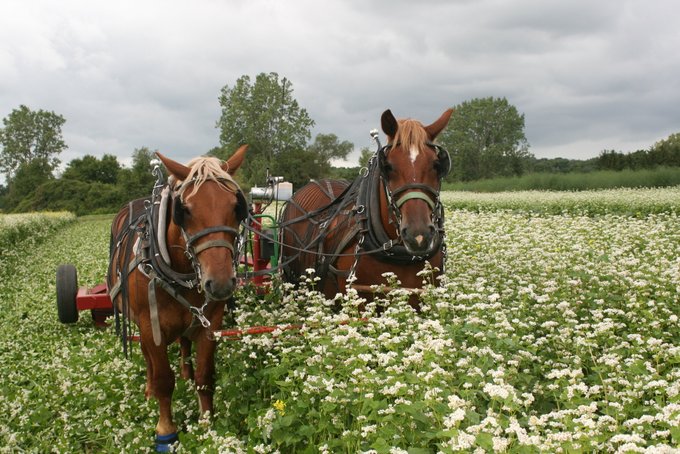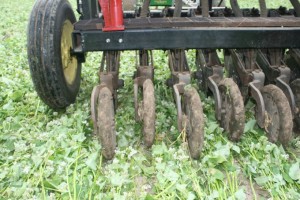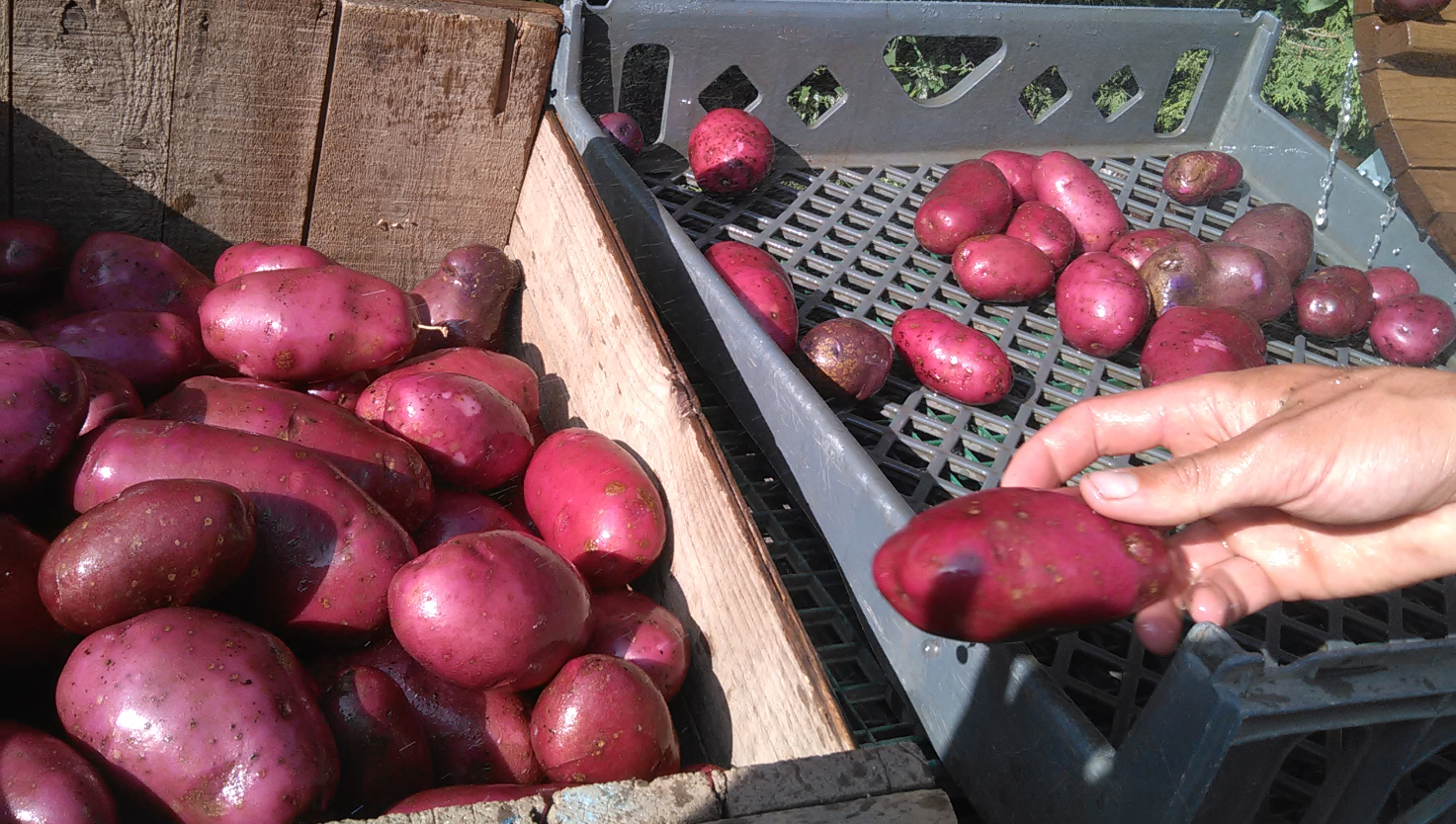


Ken is continuing to pursue organic no-till planting. Conventional no-till planting uses herbicides to control weeds and or kill the cover crop. As the understanding of the value of cover crops and no-till has increased organic farmers have developed the roller-crimper to terminate growing cover crops. They crush the stems of the plants and leave the organic matter on the surface of the soil, allowing the life in the soil to explode as millions of micro organisms work to break down the organic matter. The field that our Suffolk horses, Suzie and Sonny, are roller-crimping what will be our squash field next season. The no-till planter was used to plant another cover crop of rye and Austrian peas into the crimped buckwheat. Next spring when the rye begins to shed pollen we will crimp the field again and transplant the small squash plants directly into the rye/pea mulch. Hopefully, the peas will help to fill in the gaps and allow for good ground cover for the squash vines to grow over. We may put down a strip of green mulch right around the plants to add some extra mulch and heat as the green matter breaks down it heats up.The added heat under the row cover gives them a jump start.We cover the squash with row cover to protect them from being eaten by cucumber beetle. We’ll see how it goes next year.
As we move into September on the farm the CSA pick-ups start to include more of the fall crops. Today we plan to harvest our first leeks and more squash and red and yellow peppers. The out door tomatoes are beautiful with all the range of colour. When we manage to hold off the late blight the heritage tomatoes have flavour that is unsurpassed. The potatoes are being dug. This year we have grown some purple and red fleshed potatoes that are a fun addition to our array of potato options.
The brochures for next season are ready. Orchard Hill Farm application 2016
Borscht (Mennonite Cabbage Soup)
From CSA member John Neufeld
This is something I grew up with and is an example of true Mennonite comfort food. The Ukrainians made Borsch, and the Mennonites of the Ukraine modified the recipe substituting cabbage as the main ingredient rather than beets. This thick, hearty soup with a sweet, slightly spicy tomato broth is often served at large gatherings (because it makes so much), in fall and winter as a main course. Every Oma has her own twist to this recipe and claims it`s never as good as the last time they made it (typical Mennonite modesty). It is often served with zwiebach (traditional homemade buns) but goes great with any homemade bread (hint, hint)!
Ingredients:
- 1 kg beef soup bone, with lots of meat ( pork works well too)
- 8 cups or 2 litres of water
- 2-4 carrots, sliced thinly
- 4 medium potatoes, cubed
- 1 large (or 2 medium) onions, chopped
- 1 medium head of cabbage, chopped finely
- 284ml can of tomato soup
- 500ml can of tomatoes, diced (optional)
- red chillies (my mom often added Heinz chilli sauce)
- fresh dill
- salt and pepper to taste
- Cover soup bones with water and simmer for several hours until meat is tender.
- Remove the bone and shred the meat.
- Add more water to measure a total of 8-10 cups of stock.
- Add vegetables and seasonings.
- Cook until vegetables are tender.
- Add tomato soup, diced tomatoes (and a little chilli sauce or even ketchup for sweetness) along with shredded meat.
- Bring to boil and then let simmer (it gets better the longer it simmers).
- Serve with sour cream and fresh baked bread.
- Enjoy!




